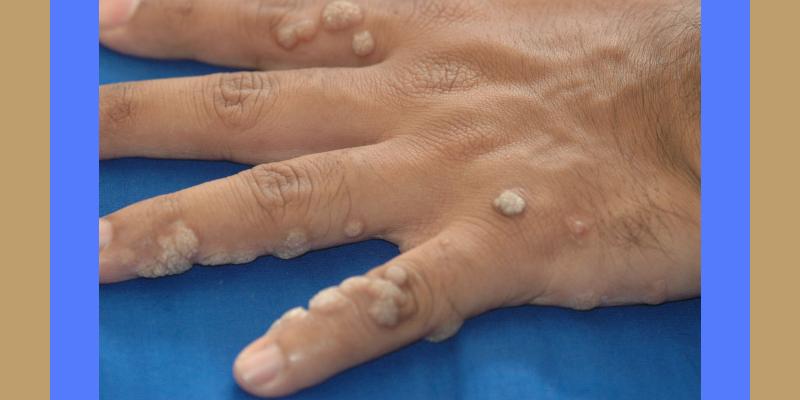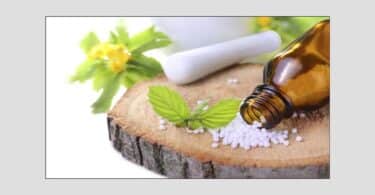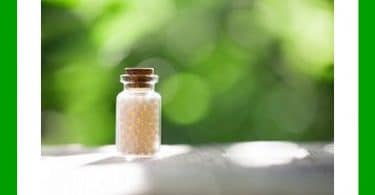Intrduction:
Day in and out we see so many people with warts (Homeopathy Treatment for Warts) on their body. It is commonly seen on the face, neck region, palms and fingers and in the armpits. However it can occur on any part of the body. They are nothing but skin growths caused by human papilloma virus (HPV) and spread easily when in direct contact with them. If you are exposed to this virus, you may or may not get warts, depending on how susceptible you are to the virus. You can infect others by sharing towels, razors, or other personal items. Avoid walking barefoot on warm, moist surfaces where the wart virus may be alive. Wear shower shoes when using public showers, locker rooms, or pool areas. Keep your feet dry. If your feet sweat heavily, wear socks that absorb moisture. Avoid irritating the soles of your feet. Warts grow more easily if your skin has been injured or broken in some way. After exposure to a human papilloma virus, it can take many months of slow growth beneath the skin before you notice a wart.
The virus infects the top layer of skin, causing it to grow rapidly. Most warts disappear on their own, but invariably they come back. The virus can spread from an existing wart to other areas of the body, causing more warts. Various types of this virus thrive in warm, damp environments such as showers, floors and swimming areas. You are most likely to develop a wart where you have broken skin, such as a cut, a hangnail, a closely bitten nail, or a scrape. Common warts are often seen among those who handle meat, chicken, and fish.
Warts occur in a variety of shapes and sizes. A wart may appear as a bump with a rough surface, or it may be flat and smooth. Tiny blood vessels (capillaries) grow into the core of the wart to supply it with blood and may appear as dark dots (seeds) in the wart’s center.
Types of Warts:
Common Wart: It usually appears singly or in groups on the hands, although they may grow on any part of the body. They usually are rough, gray-brown, dome-shaped growths.
Plantar Warts: It can develop on any part of the foot. As the wart gets larger, walking can become painful, much like walking with a pebble in your shoe. When pressure from standing or walking pushes a plantar wart beneath the skin’s surface, a layer of thick, tough skin develops over it. Sometimes dark specks are visible beneath the surface of the wart.
Flat Warts: They are small warts usually found on the face, arms, or legs and are generally located in one area. They have flat tops and can be pink, light brown, or light yellow. Flat warts are often spread by shaving.
Filiform Warts: It is a kind of flat wart that can grow around the mouth, nose, and beard area. The surface of this type of wart has many flesh-colored, finger-shaped growths.
Periungual Warts: They are found under and around the toenails and fingernails. They appear as rough, irregular bumps.
Many times warts cover the lines and creases in the skin, thus making it difficult to tell a wart from other skin conditions, such as skin tags or moles.
Risk Factors for Warts:
- Having an impaired immune system
- Patients who are on immuno suppressive drugs.
- Walking barefoot on moist surfaces, as in public showers and locker rooms and around swimming pool areas.
- Sharing towels, razors, and other personal items with a person who has warts.
- Biting your nails or cuticles.
- Wearing closed or tight shoes that cause sweaty feet.
Diagnosis:
Warts are usually diagnosed based only on their appearance. In rare cases, more testing is done. If the diagnosis of a skin condition is unclear or if you are at high risk for having skin cancer, then a skin biopsy is done. It is usually done if a skin growth is darker than the skin surrounding it, appears as an irregular patch on the skin, bleeds, or is large and growing rapidly.
Treating Warts:
You may decide to treat a wart if it is painful, embarrassing, easily irritated and growing or spreading to other parts of your body or to other people.
The goal of wart treatment is to remove the wart without creating scar tissue, which can be more painful than the wart itself. How a wart is treated depends on the type of wart, its location, and its symptoms. Also important is your willingness to follow a course of treatment that can last for weeks or months.
Wart treated with the modern line of treatment isn’t always successful. Even after a wart shrinks or disappears, warts may return or spread to other parts of the body. Thus the homoeopathic line of treatment is the most effective of all as it removes the wart right from its roots so there is no reoccurrence of the same.
Homoeopathic Prescription:
Homeopathy treats the person as a whole. The homeopathic medicine for warts are selected after a full individualizing examination and case-analysis which includes the medical history of the patient, physical and mental constitution etc. A miasmatic tendency (predisposition/susceptibility) is often taken into account for the treatment of chronic conditions. The homeopathic remedies for warts given below indicate the therapeutic affinity but this is not a complete and definitive guide to the treatment of this condition.
Antimonium crudum (Ant-c.): Warts that are hard and smooth and often appear in groups. Irritability and a thickly coated white tongue also suggest the need for this remedy. The person may also have various digestive complaints.
Calcarea carbonica (Calc.): Warts on the neck that are round, hard, and solitary. Indicated in fleshy people with clammy hands and feet.
Causticum (Caust.): Useful for old, large warts on the face especially on the nose, under the fingernails, or warts on fingertips that bleed easily. The warts also tend to be hard, inflamed, and painful and sit on whitish-yellow, dirty looking skin. People who benefit from this remedy tend to fear that something awful will happen and feel intensely sympathetic about the hardship of others.
Dulcamara (Dulc.): Flat warts located on backs of hands and face. Also soft brownish to black warts found on the back. Indicated in people with rheumatic complaints that are worse in cold, damp weather or humidity.
Ferrum picricum (Ferr-pic.): Small pointed warts appearing in large groups. Also useful in some cases of flat or plane warts that grow on the face, neck, wrists, hands and knees.
Graphites (Graph.): Especially in periungual warts or corn-like warts on palms or soles of feet that may be tinged with yellow.
Natrum muriaticum (Nat-m): An important remedy for warts on the palms of the hand and soles of the feet. Indicated in people who are shy, reserved and sensitive.
Nitricum acidum (Nit-ac.): This homeopathic remedy is indicated in treating large, fissured or gold-yellow warts that itch and sting or bleed upon washing. This remedy is also indicated for people who are anxious about health and worry about cancer.
Ruta graveolens (Ruta): This is a homeopathic remedy for plantar warts, especially on the palms of the hand.
Thuja occidentalis (Thuj.): The most common homeopathic remedy for various kinds of warts. Particularly indicated in isolated, jagged warts that bleed easily or mosaic warts on the sole of the foot.
Advice:
None of these homeopathic remedies for warts should be taken without professional advice. The author disclaims any liability for the decisions you make based on this information.





